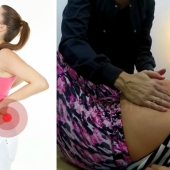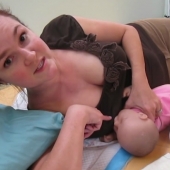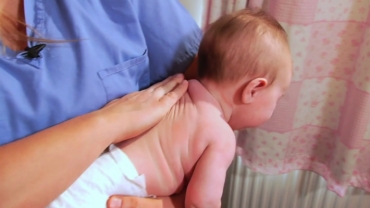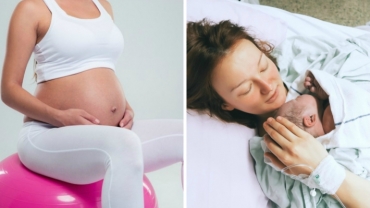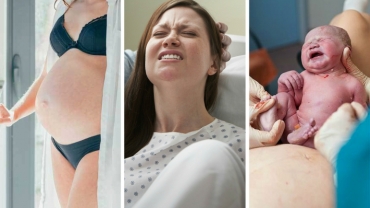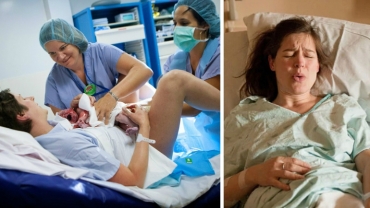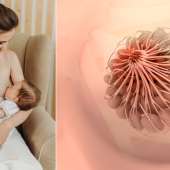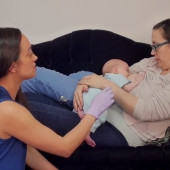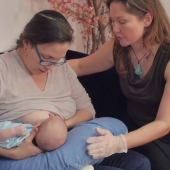Many hospitals have single room maternity care. In these rooms, mothers labour, give birth, and mother and baby stay together until they are discharged home.
In some hospitals, babies are born in a delivery room and are transferred in a wheelchair or on a stretcher to a postpartum room soon after the baby has had their first feeding. During the transfer, mothers and babies can remain together skin-to-skin. This helps keep your baby warm and stable during the transfer.
Your baby will also wear a touque or hat for about the first 6 hours to help stabilize his temperature. After that time, a hat is not needed.
As you and your baby are admitted to a postpartum room, your baby can remain skin-to-skin. Your partner may also want to hold baby skin-to-skin while you are being moved to your bed. Your baby can then be placed back on to your chest as soon as you are settled. Being skin-to-skin helps your baby recover from the stress of being born, lessens the amount of crying, and helps your baby latch to your breast.
The nurse admitting you to the postpartum room will assess you and your baby while your baby is being kept skin-to-skin. Your nurse will explain what she finds during the assessment and answer any questions you or your family may have at this time.
When your baby is ready to breastfeed, you will be offered support. Your nurse will also show you how to hand express colostrum, your first breast milk. This is a useful skill to learn to help prevent breast fullness and tenderness, also known as engorgement, or in the event expressed breast milk is needed to feed your baby.
Your partner may want to put your baby skin- to-skin or hold your baby if you need to use the bathroom, if your baby is fussy and you feel you need a break, or if you want to have a nap.
- 676 views

